At the centre of New Delhi stands the 42 m high India Gate, an "Arc-de-Triomphe" like archway in the middle of a crossroad. Almost similar to its French counterpart, it commemorates the 70,000 Indian soldiers who lost their lives fighting for the British Army during the World War I. The memorial bears the names of more than 13,516 British and Indian soldiers killed in the Northwestern Frontier in the Afghan war of 1919.
The foundation stone of India Gate was laid by His Royal Highness, the Duke of Connaught in 1921 and it was designed by Edwin Lutyens. The monument was dedicated to the nation 10 years later by the then Viceroy, Lord Irwin. Another memorial, Amar Jawan Jyoti was added much later, after India got its independence. The eternal flame burns day and night under the arch to remind the nation of soldiers who laid down their lives in the Indo-Pakistan War of December 1971.
During nightfall, India Gate is dramatically floodlit while the fountains nearby make a lovely display with coloured lights. India Gate stands at one end of Rajpath, and the area surrounding it is generally referred to as 'India Gate'.

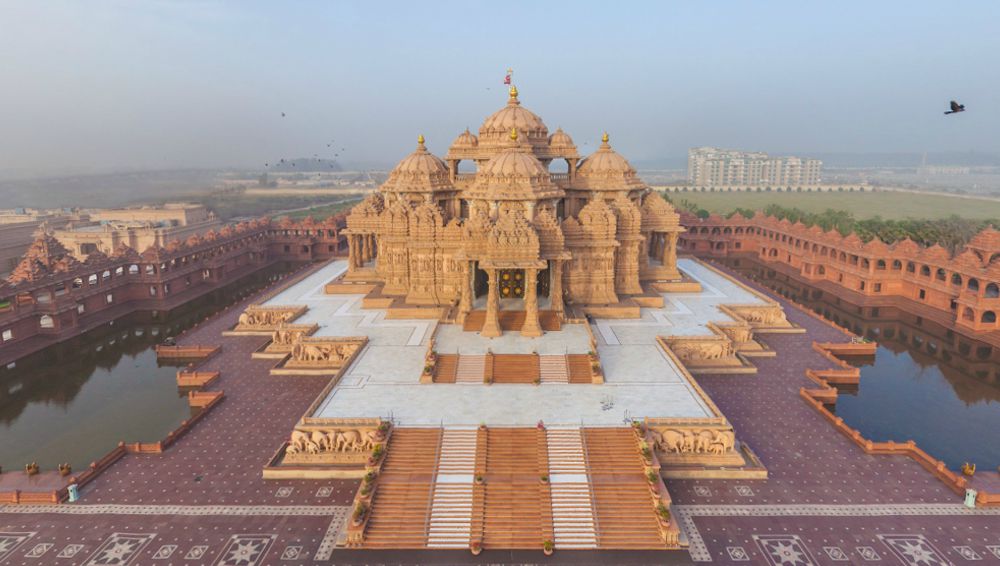
Swaminarayan Akshardham in New Delhi epitomizes 10,000 years of Indian culture in all its breathtaking grandeur, beauty, wisdom an d bliss. It brilliantly showcases the essence of India's ancient architecture, traditions and timeless spiritual messages. The Akshardham experience is an enlightening journey through India's glorious art, values and contributions for the progress, happiness and harmony of mankind.
The Swaminarayan Akshardham complex was built in only five years through the blessings of HDH Pramukh Swami Maharaj of the Bochasanwasi Shri Akshar Purushottam Swaminarayan Sanstha (BAPS) and the colossal devotional efforts of 11,000 artisans and thousands of BAPS volunteers. Heralded by the Guinness World Record as the World's Largest Comprehensive Hindu Temple, the complex was inaugurated on 6 November, 2005.
A traditional mandir (temple) dedicated to Bhagwan Swaminarayan that reflects the beauty and spirituality of India's ancient art, culture, and architecture.
Dilli Haat transports you to the magical world of Indian art and heritage presented through a fascinating panorama of craft, cuisine and cultural activities. The word haat denotes an informal weekly market or bazaar that is held in the rural areas of India. Dilli Haat, INA near AIIMS (All India Institute of Medical Sciences) is a unique, upgraded and a much more sophisticated version of a haat. Another Dilli Haat is operational at Pitam Pura, Near TV Tower in North Delhi.
You can also savour the inimitable flavors of the delightful local foods from the various regions of India be it the momos from Sikkim or the Bamboos hot chicken from Nagaland, Kahwa & Kebabs from Jammu, Pooranpoli from Maharastra or the Gujrati Dhokla. The food stalls offer you variety of foods served in an Eco friendly manner.
The Food and Craft Bazar is a treasure house of Indian culture, handicrafts and ethnic cuisine, A unique bazaar, in the heart of the city, it displays the richness of Indian culture on a permanent basis.
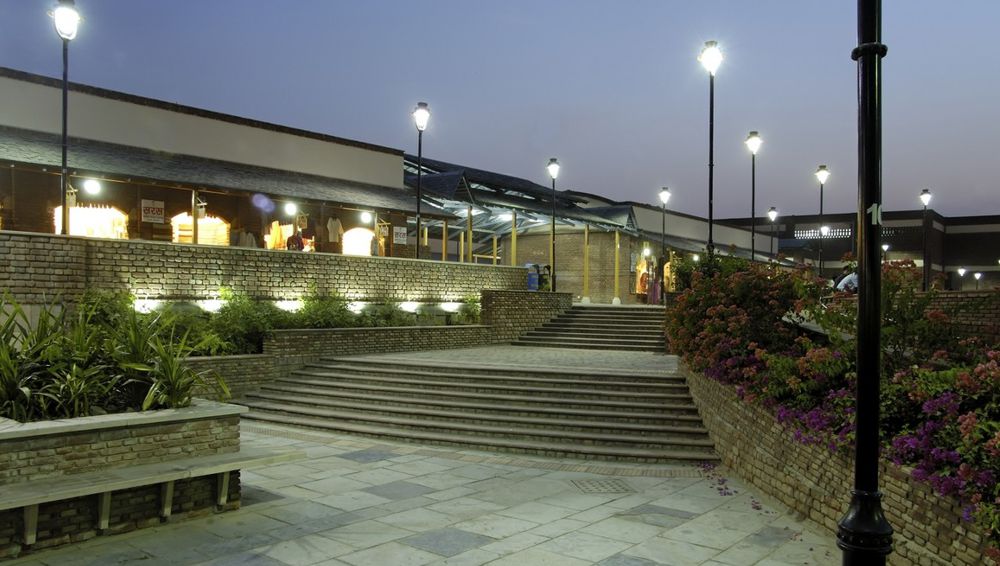
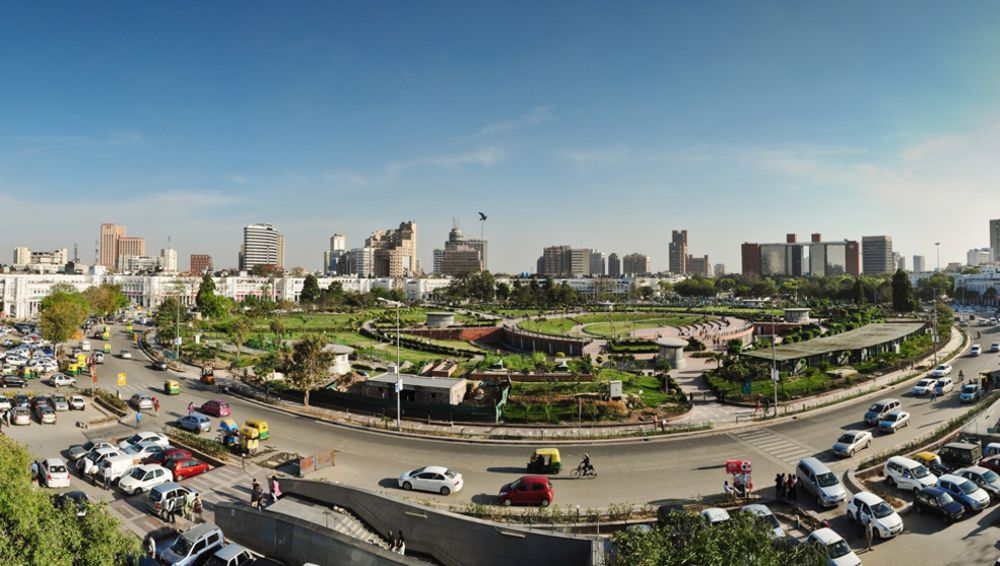
Connaught Place is one of the largest financial, commercial and business centres in New Delhi, India. It is often abbreviated to CP and houses the headquarters of several noted Indian firms. The former location of the headquarters of the British Raj, the area's environs occupy a place of pride in the city and are counted among the top heritage structures in New Delhi. It was developed as a showpiece of Lutyens' Delhi with a prominent Central Business District.
When it came into being, the sprawling circular market was the largest of its kind in India. The British believed that the horseshoe-shaped market would prove lucky for the shoppers and the shopkeepers both. This market has two circles.
Connaught Place's Georgian architecture is modeled after the Royal Crescent in Bath. While the Royal Crescent is semi-circular and a three storied residential structure, Connaught Place had only two floors, which made almost a complete circle intended to house commercial establishments on the ground with residential space on the first floor.
Qutab Minar is a soaring, 73 m-high tower of victory, built in 1193 by Qutab-ud-din Aibak immediately after the defeat of Delhi's last Hindu kingdom. The tower has five distinct storeys, each marked by a projecting balcony and tapers from a 15 m diameter at the base to just 2.5 m at the top. The first three storeys are made of red sandstone; the fourth and fifth storeys are of marble and sandstone. At the foot of the tower is the Quwwat-ul-Islam Mosque, the first mosque to be built in India. An inscription over its eastern gate provocatively informs that it was built with material obtained from demolishing '27 Hindu temples'. A 7 m-high iron pillar stands in the courtyard of the mosque. It is said that if you can encircle it with your hands while standing with your back to it your wish will be fulfilled.
The origins of Qutab Minar are shrouded in controversy. Some believe it was erected as a tower of victory to signify the beginning of the Muslim rule in India. Others say it served as a minaret to the muezzins to call the faithful to prayer.
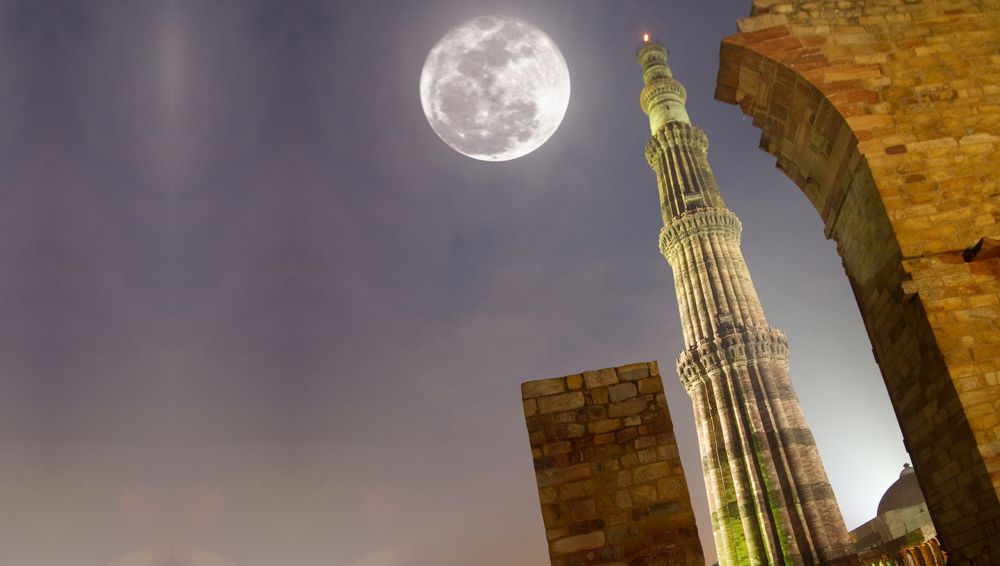
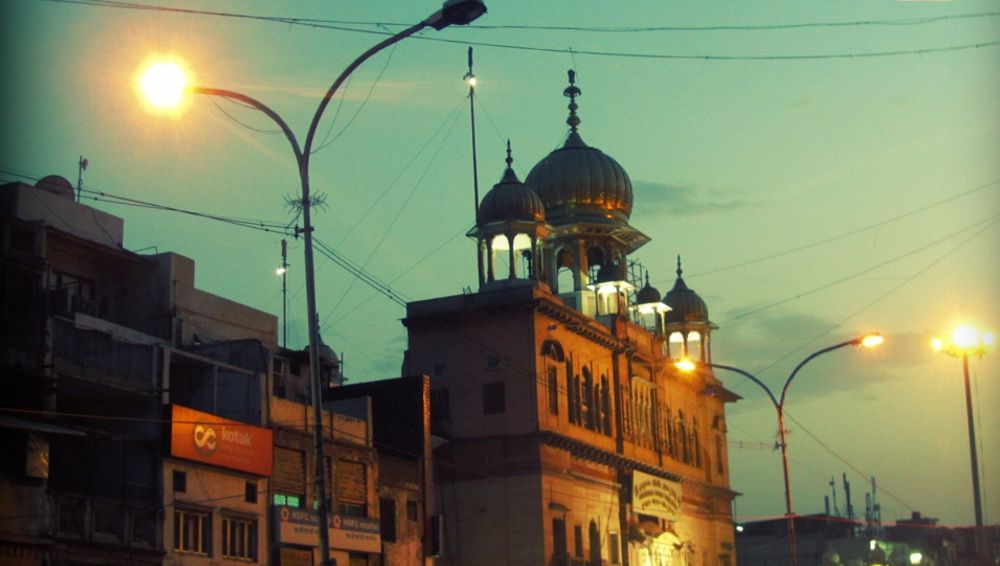
Chandni Chowk It is the perfect place to shop in. This densely populated market has been around for more than three centuries and was once visited by merchants from Turkey, China and even Holland. You may buy curios and souvenirs from here. Dariba Kalan is known for its pearl, gold and silver jewellery and attar (natural perfumes). Gulab Singh Johri Mal, established in 1819, are well-known manufacturers and exporters of attar.
A visit to Khari Baoli is a must for the spice-lover - don't forget spices are what connected India to the West. Kinari Bazaar is the best place to look for zari and zardozi trimmings and tinsel. The cloth bazaar of Katra Neel offers all kinds of fabrics such as silks, satin, crepe, cotton and muslin. Bhagirath Palace is Asia's largest market for electrical goods and also offers medical equipment and allopathic medicines. Moti Bazaar is famous for shawls and pearls and Tilak Bazaar for chemicals.

